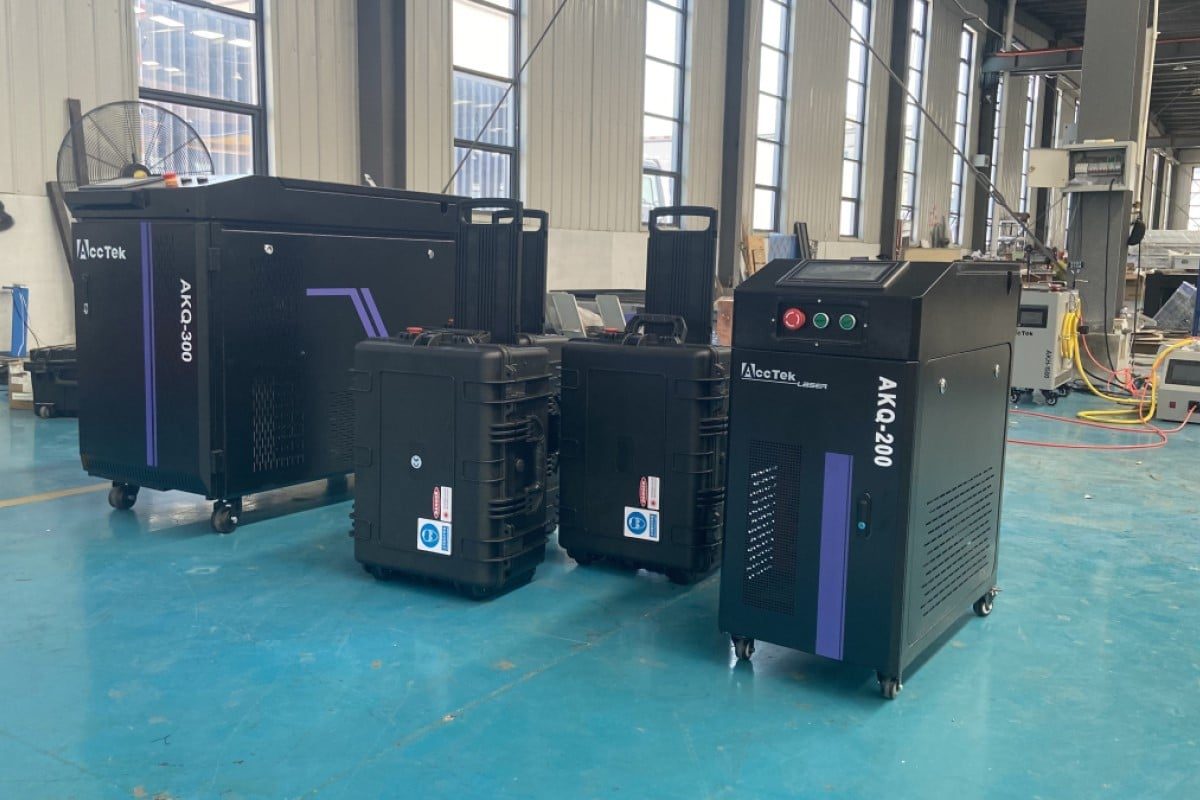
What Types of Cooling Systems Do Laser Cleaning Machines Have?
Laser cleaning technology is increasingly popular in modern industrial applications, effectively removing dirt, grease, and contaminants from a variety of surfaces. Laser cleaning machines generate a large amount of heat during operation, which may lead to reduced cleaning efficiency and reduced cleaning quality. Therefore, an effective cooling system is required to ensure the stability and performance of the equipment. This article will explore the different types of cooling systems for laser cleaning machines, their respective advantages and disadvantages, and how to choose the right cooling system.
Table of Contents
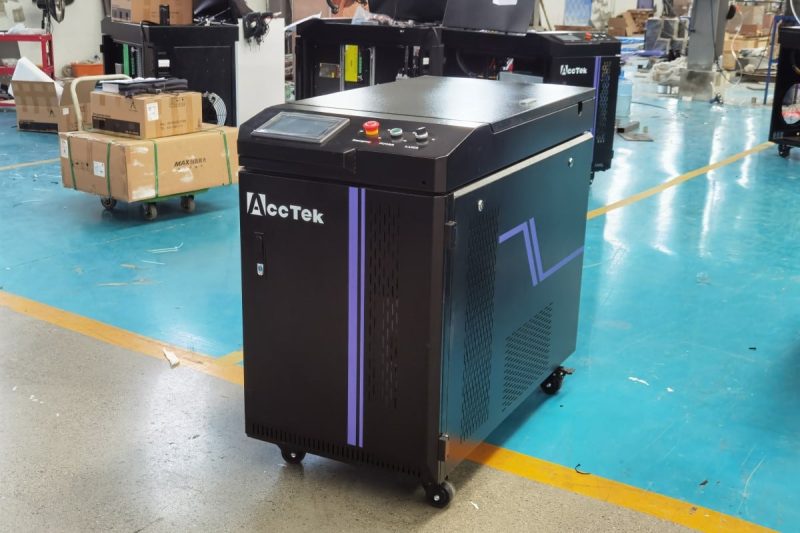
What is a laser cleaning machine?
Before we discuss the cooling system of the laser cleaning machine in depth, we first need to understand the basic principles of the laser cleaning machine. A laser cleaning machine is a device that uses laser technology to clean and remove dirt, coatings, grease, and contaminants on the surface of objects. Laser cleaning machines use high-energy laser beams to clean the target surface by absorbing impurities on the surface of the object. The high energy of the laser beam causes dirt and contaminants to vaporize or sinter, removing them from the surface.
This cleaning method has many advantages, including high efficiency, no need for chemical cleaning agents, no damage, and no waste. However, laser cleaning machines generate a large amount of heat during operation, which requires an effective cooling system to dissipate heat to ensure the normal operation of the equipment.
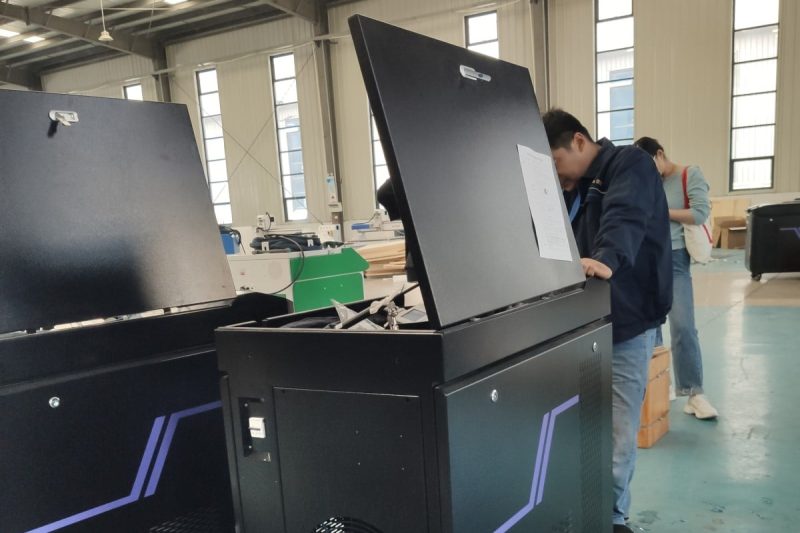
Why does a laser cleaning machine generate a lot of heat when operating?
The cooling requirements of the laser cleaning machine refer to the fact that to maintain the normal operation and stability of the equipment, the heat generated by the equipment during its working process must be managed and controlled. Laser cleaning machines generate a large amount of heat during operation. The main reasons include the following:
- Laser generator heat: The laser generator in the laser cleaning machine is the core component that generates the laser beam. It generates a large amount of heat when working. Laser generators often need to be maintained within a specific operating temperature range to ensure laser beam stability and performance.
- Optical component heat dissipation: The laser beam passes over the optical components inside the laser cleaning machine, and these components will also heat up due to energy absorption. Excessive temperature will cause the performance of optical components to decrease, thus affecting the cleaning effect.
- Ambient temperature: The temperature of the working environment will also affect the heat dissipation effect of the device. In high-temperature environments, equipment is more likely to overheat, while in low-temperature environments, additional insulation may be required.
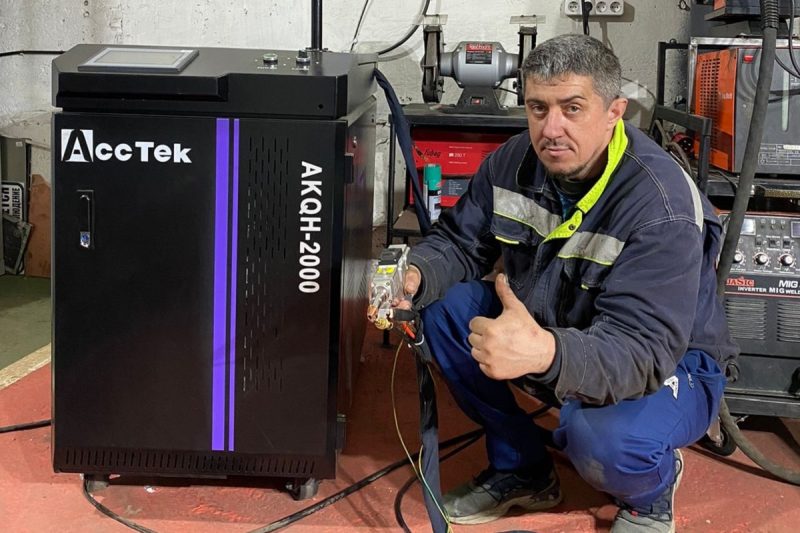
Cooling requirements of laser cleaning machine cooling system
Therefore, to meet the cooling needs of laser cleaning machines, a cooling system is usually required to manage and control this heat. The main tasks of the cooling system include:
Heat dissipation
Laser cleaning machines generate a large amount of heat when operating because the energy of the high-energy laser beam is converted into heat energy. This heat needs to be conducted and dissipated quickly to prevent the device from overheating, which can lead to reduced performance or even damage.
Maintain laser generator stability
The laser generator in the laser cleaning machine is the core component of the equipment. The cooling system must be able to effectively maintain the temperature of the laser generator to maintain the stability and performance of the laser beam. It needs to be maintained within the appropriate operating temperature range to ensure stable laser output.
Extend equipment life
Through an effective cooling system, the failure of the laser cleaning machine due to heat can be reduced, thereby extending the life of the laser cleaning machine and reducing maintenance costs and equipment downtime.
Different types of laser cleaning machines may require different types of cooling systems, and the specific choice depends on the power of the equipment, operating environment, and application requirements.
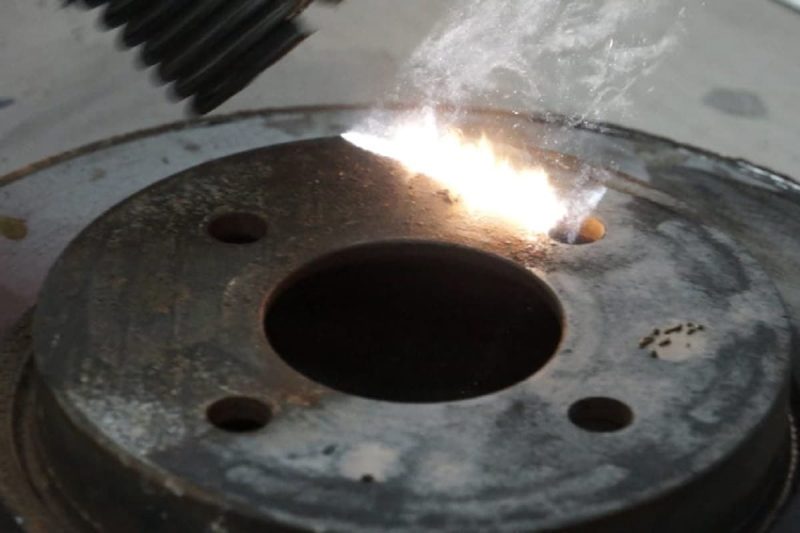
Common types of laser cleaning machine cooling systems
To meet the cooling needs of laser cleaning machines, different types of cooling systems have been developed. Here are some common types of laser cleaning machine cooling systems:
Water cooling system
A water cooling system is one of the most common cooling systems for laser cleaning machines. It uses water to cool laser generators and other heat-sensitive components. Water cooling systems usually include a cooling water tank, water pump, cooler, and cooling water pipes. The heat generated by the laser generator is dissipated through the cooling water circulation through the cooler and then is taken away by the cooling water. The advantages of this system include good heat dissipation and high stability, but it requires regular maintenance of water quality and prevention of cooling water freezing.
Air cooling system
Air cooling systems use air to cool laser generators and other heat-sensitive components. Such systems usually include fans and heat sinks to achieve a cooling effect by dissipating heat through air. The advantage of the air cooling system is that it is relatively simple and does not require the maintenance of the water cooling system, but the heat dissipation effect is not as good as that of the water cooling system, so it is suitable for lower power laser cleaning machines.
Liquid nitrogen cooling system
The liquid nitrogen cooling system uses liquid nitrogen to cool the laser generator. The low temperature of the liquid nitrogen can quickly reduce the temperature of the laser generator. The advantage of this system is that the cooling effect is very good and can be used in high-power laser cleaning machines. However, the cost of liquid nitrogen is relatively high, and special equipment is required to handle liquid nitrogen.
Refrigerant cooling system
Refrigerator cooling systems use refrigerators to reduce the temperature of laser generators and other heat-sensitive components. Refrigerators absorb and reject heat by circulating refrigerant to keep the temperature of the system stable. The advantage of this system is that it has high stability and is not affected by the ambient temperature, but it requires additional energy supply and maintenance of the refrigerator.
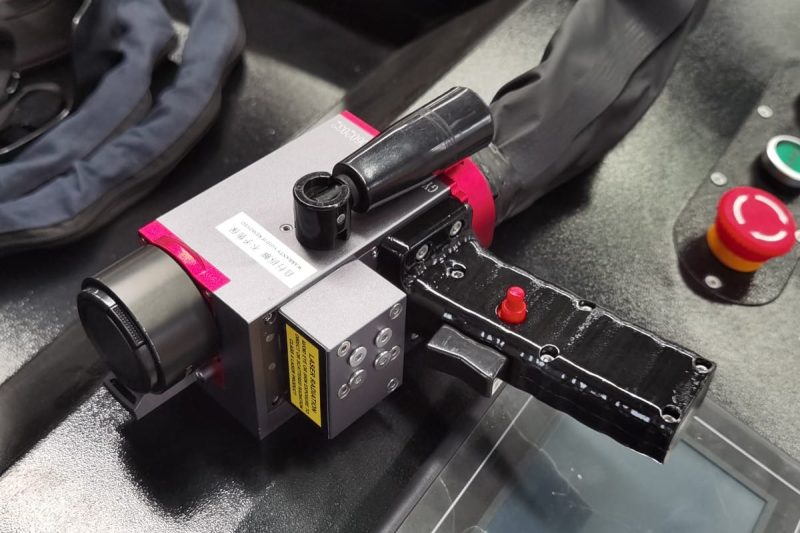
Advantages and Disadvantages of Different Types of Cooling Systems
Different types of cooling systems each have their own advantages and disadvantages, which will be briefly analyzed below:
Water cooling system
- Advantages: good heat dissipation effect, suitable for high-power laser cleaning machines. High stability, able to maintain the operating temperature of the laser generator for a long time. The cooling water can be recycled and does not need to be replaced frequently.
- Disadvantages: It is necessary to maintain water quality, prevent water pollution, and replace cooling water regularly. Cooling water pipes require special treatment to prevent freezing. There is a certain amount of water consumption.
Air cooling system
- Advantages: Relatively simple, no maintenance of water cooling system required. Suitable for low-power laser cleaning machines. No water consumption.
- Disadvantages: The heat dissipation effect is not as good as that of water cooling systems, and the scope of application is limited. High-power laser cleaning machines may not be able to meet heat dissipation needs. Sufficient airflow and a clean environment are required.
Liquid nitrogen cooling system
- Advantages: The cooling effect is very good and suitable for high-power laser cleaning machines. No additional water resources are required. Temperature control is precise.
- Disadvantages: The cost of liquid nitrogen is high and special equipment is required for handling. The storage and supply of liquid nitrogen require special attention. It is not suitable for all applications and is mainly used in some special fields.
Refrigerator cooling system
- Advantages: High stability, not affected by ambient temperature. Suitable for high-power laser cleaning machines. Precise temperature control can be achieved.
- Disadvantages: The additional energy supply is required. The system is complex and the cost of maintaining the refrigerator is high.

Selection and application factors of laser cleaning machine cooling system
Selecting an appropriate laser cleaning machine cooling system involves several factors that will impact system performance, equipment life, and operating costs. Here are some key factors that influence the selection of a laser cleaning machine cooling system:
Laser cleaning machine model and power
The power of a laser cleaning machine determines the amount of heat it generates when operating. High-power machines require more powerful cooling systems to effectively dissipate heat. Therefore, the power of the laser cleaning machine is the primary factor in selecting a cooling system.
Requirements for cleaning applications
Different application fields may have different requirements for the cooling system of laser cleaning machines. For example, in some medical or precision manufacturing areas, a highly controllable cooling system is required, while in some industrial cleaning applications, cost-effectiveness may be more important.
Working environment conditions
The temperature and humidity conditions of the work environment influence the choice of cooling system. In high-temperature environments, a more powerful cooling system may be needed to prevent the device from overheating, while in low-temperature environments, additional insulation may be required.
Performance requirements
Different applications may have different requirements for laser cleaning machine performance. Some applications may require greater stability and controllability, while others may focus more on economy and simplicity. The performance of the cooling system needs to be matched to the specific application.
Maintenance and cost considerations
The purchase, maintenance, and operating costs of different cooling systems vary. And because different types of cooling systems require different levels of maintenance. Maintenance requirements are an important consideration when considering equipment longevity and reliability.
Sustainability and environmental protection
In some applications, environmental considerations may be a key consideration. Some cooling systems may have a smaller impact on water resources or other environmental factors, thus meeting sustainability goals.
Summarize
The cooling system of the laser cleaning machine is a key component to ensure the normal operation of the equipment and increase the life of the equipment. Different types of cooling systems have their own advantages, disadvantages, and applicable scenarios. Therefore, when selecting a cooling system, you need to fully consider the power, working environment, and budget of the laser cleaning machine. By properly selecting and maintaining the cooling system, you can ensure the efficient operation of your laser cleaning machine, providing cleaning solutions for a variety of industrial applications.
For those ready to embrace the future of clean technology, AccTek Laser is your trusted partner. If you are interested in purchasing a laser cleaning machine, please feel free to contact us. Our team is here to help you find the perfect solution for your needs. Let’s redefine cleaning together.
Contact information
- [email protected]
- [email protected]
- +86-19963414011
- No. 3 Zone A, Lunzhen Industrial Zone,Yucheng City , Shandong Province.
Get Laser Solutions
